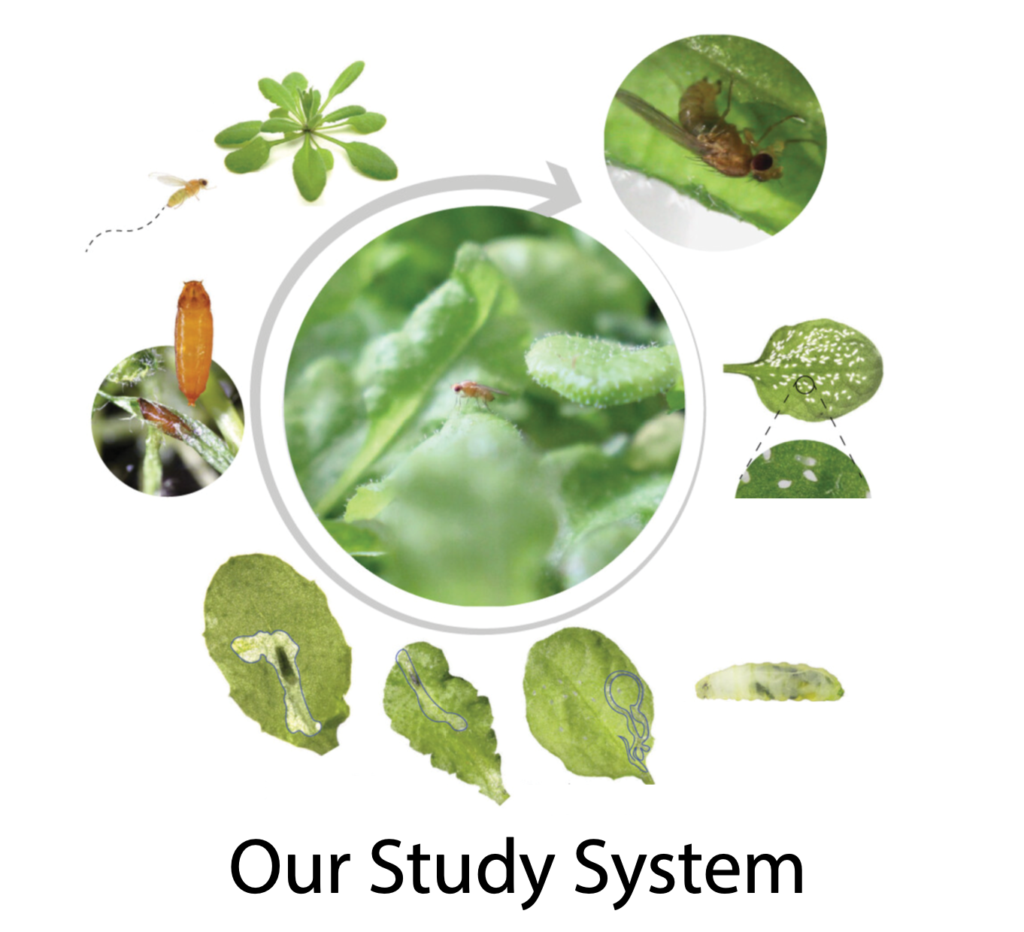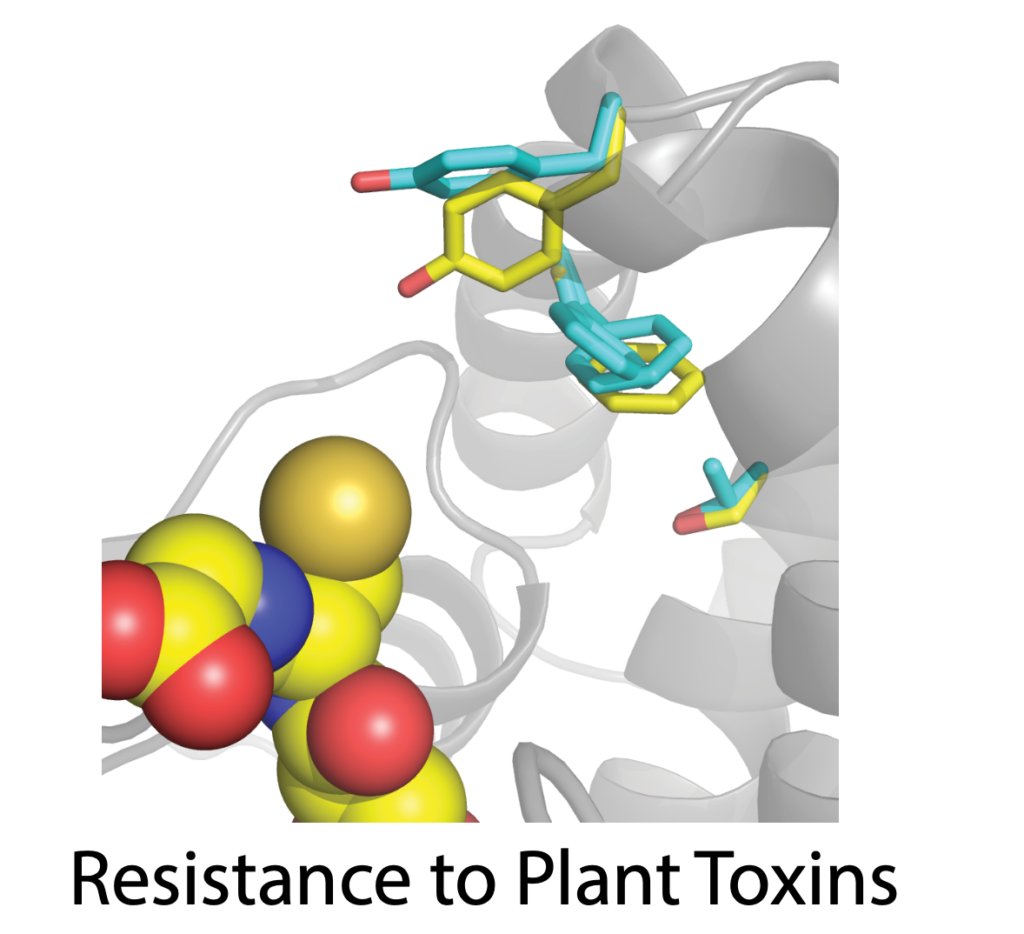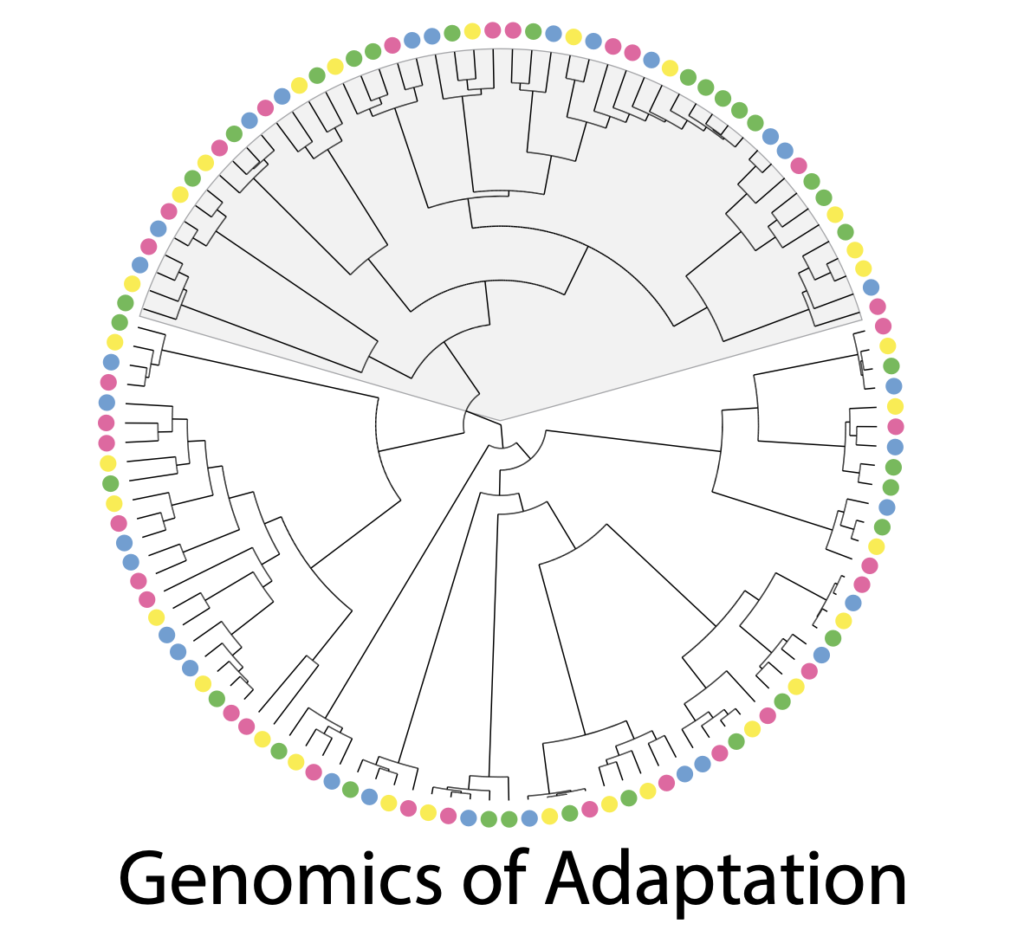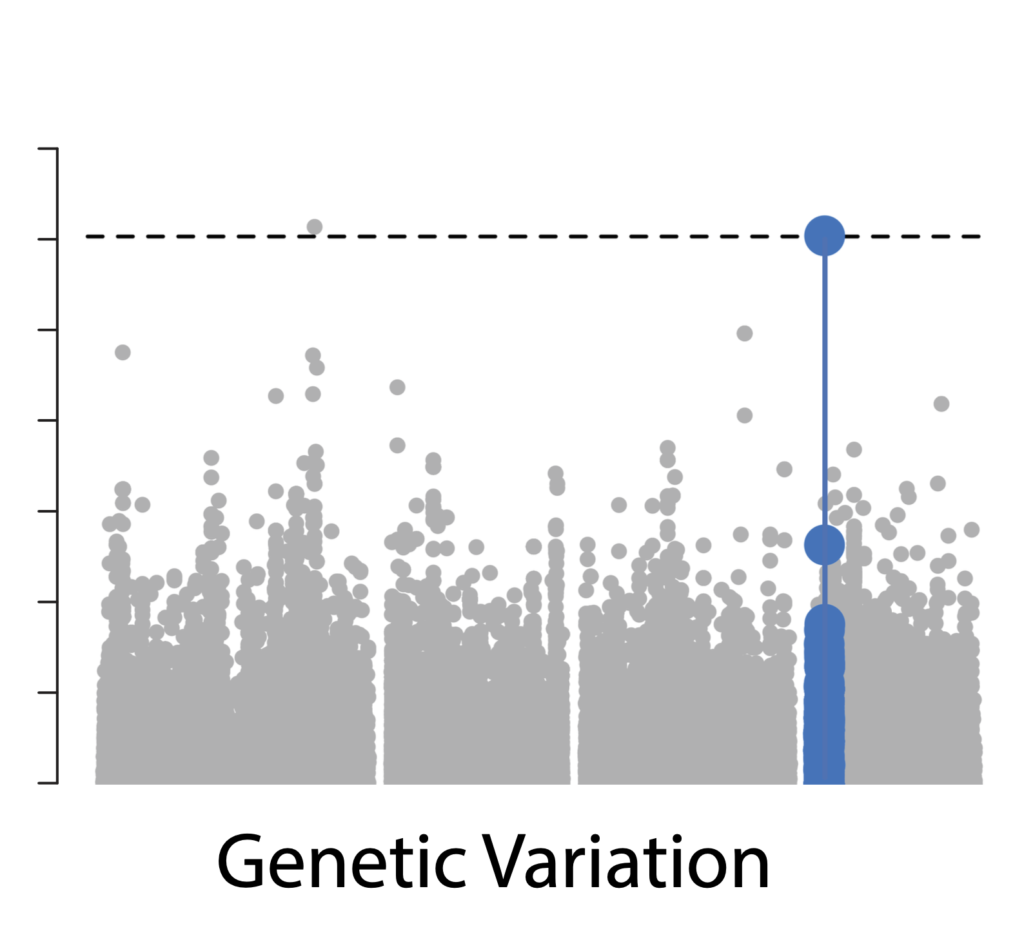Herbivorous insects are among the most successful—and destructive—organisms on Earth. One third of all animal species are herbivorous insects, and they collectively remove over 20% of plant biomass in both natural and agricultural systems. Yet we know surprisingly little about how herbivory originates: how insects transition from ancestral diets like detritus, microbes, or other insects to feeding on living plants. These evolutionary origins are obscured by the fact that most herbivorous insect lineages trace back to ancestors that first became herbivorous hundreds of millions of years ago.
We integrate functional genetics, evolutionary genomics, biochemistry, and physiology to uncover how herbivory evolves in insects. We focus primarily on transitions to herbivory in Scaptomyza, a genus of flies closely related to Drosophila melanogaster, the leading model organism for insect genetic research. This system has two advantages: (1) transitions to herbivory occurred much more recently (~10 million years ago), enabling us to more precisely identify the genetic and physiological changes underlying this shift, and (2) we can apply the wealth of tools and knowledge from Drosophila to dissect the functions of the genes involved.
While our primary goal is to understand how herbivory evolves, this work also has practical implications. By identifying genes and traits essential for herbivory, we aim to uncover new targets for protecting crops from insect pests. More broadly, by studying how organisms adapt to novel diets, we also hope to shed light on genes that mediate the link between diet and health—which may inform our understanding of the relationship between diet and disease in humans.
Click on the images below to learn more about the major areas of focus for our research.



